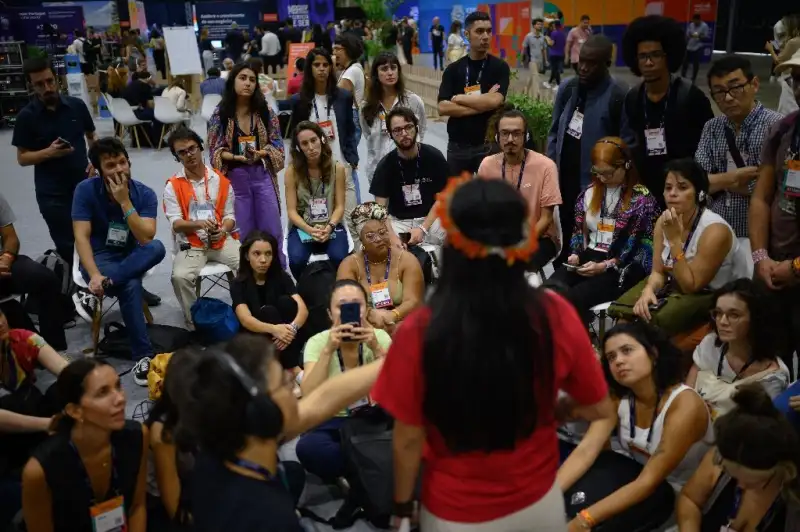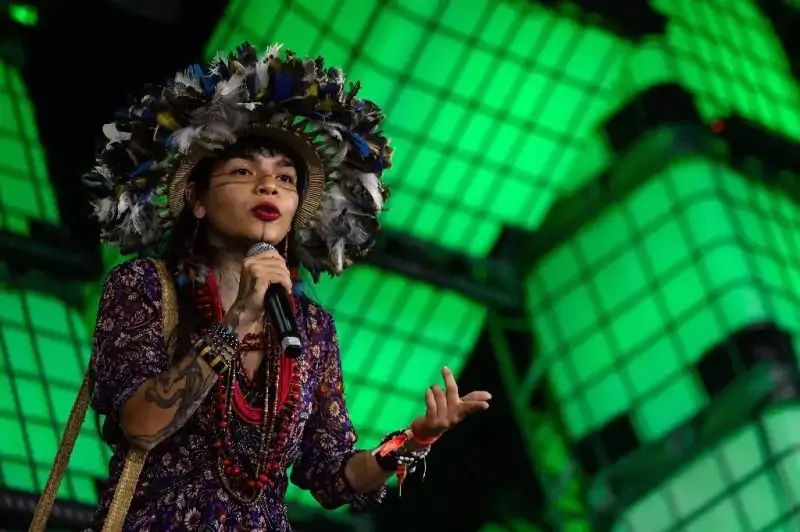Once upon a time there were bows and arrows. Today, indigenous weapons to protect the Brazilian Amazon have changed shape, and have the faces of people like Txai Surui. At just 26, this Brazilian girl is making her mark at Web Summit Rio, the largest annual technology event.
Technology and ancestral wisdom: a winning mix
For Txai, technology is a key tool to protect indigenous lands from illegal logging and illegal mining. Alongside the knowledge of the "genius loci", these new digital weapons represent a form of resistance.
During the conference, Txai invited big names in the tech industry to visit the Amazon and connect with nature. “To better understand the needs of indigenous populations,” he says.
The Amazon is still too alone
Despite being the only indigenous representative at the Web Summit Rio, Txai continues with determination the path taken by her parents, also activists who have received death threats for fighting illegal deforestation.
Even if the "revived" Brazilian president Luiz Inacio Lula da Silva he promised to protect the Amazon, Txai is convinced that it is possible to change things, but she also knows that the road is still long.

In practice, how to make technology a weapon to save the Amazon
In practice, technology can be of great help in combating deforestation in the Amazon thanks to various tools and solutions.
Here are some examples:
- Satellite tracking: the use of satellite images allows the extension of the forest to be monitored in real time, quickly identifying any signs of deforestation. This allows you to act promptly, sending the authorities to the scene to stop illegal activities.
- Drones and sensorsI drones and sensors they can be used to monitor large areas of the forest and detect suspicious activity, such as the felling of trees or the entry of unauthorized groups of people. The information collected can be transmitted in real time to the competent authorities, who can intervene to prevent further damage to the ecosystem.
- Blockchain and traceability: blockchain technology can be used to ensure greater transparency and traceability in the wood supply chain, allowing the legal origin of wood to be verified and thus discouraging the marketing of products resulting from illegal deforestation activities.
- Digital apps and platforms: Indigenous communities and activists can use apps and digital platforms to share information, report cases of deforestation and organize awareness and protest campaigns. These technologies allow for the creation of collaboration and support networks at a local and global level, increasing the visibility of the problem and favoring the mobilization of resources to fight deforestation.
- Artificial intelligence and machine learning: The use of artificial intelligence and machine learning algorithms can help analyze huge amounts of data from satellites, drones and sensors, quickly identifying areas at risk and predicting possible future deforestation scenarios. This allows us to adopt more effective preventive and intervention strategies.
It is essential that these technologies are used ethically and sustainably. Above all, it is necessary to work in collaboration with indigenous communities and local activists to guarantee respect for the traditions and rights of the populations involved.

In short (Italian only)
The story of Txai Surui and the other young indigenous activists is a real appeal. A call to use the tools that we ourselves have developed for good. It shows that it is possible to change the fate of the Amazon and our planet.
Technology, if used wisely, can become a formidable ally in the fight to protect the environment and indigenous populations.
As long as we don't put the economy ahead of Nature. Otherwise everything becomes “techwashing”.


